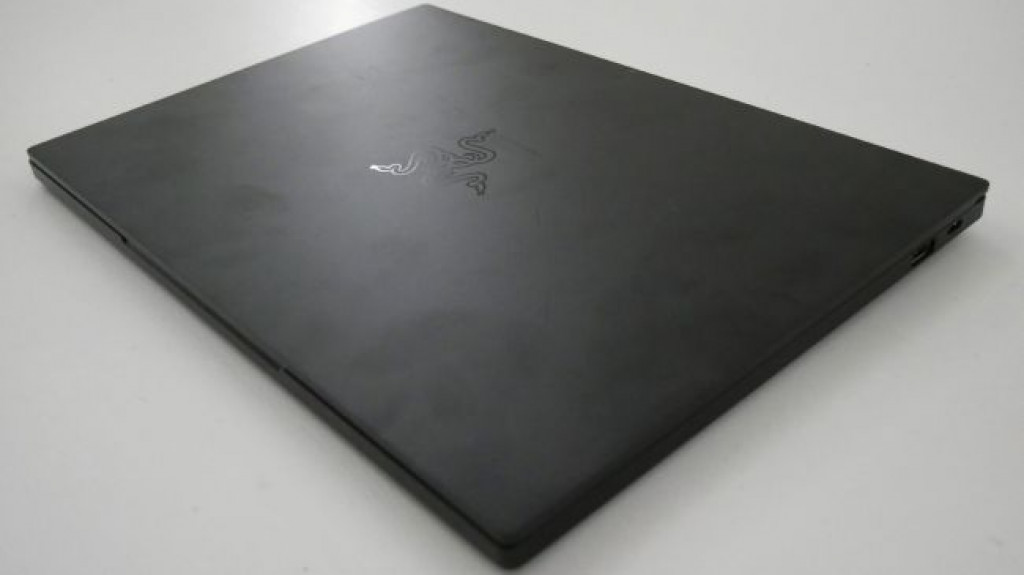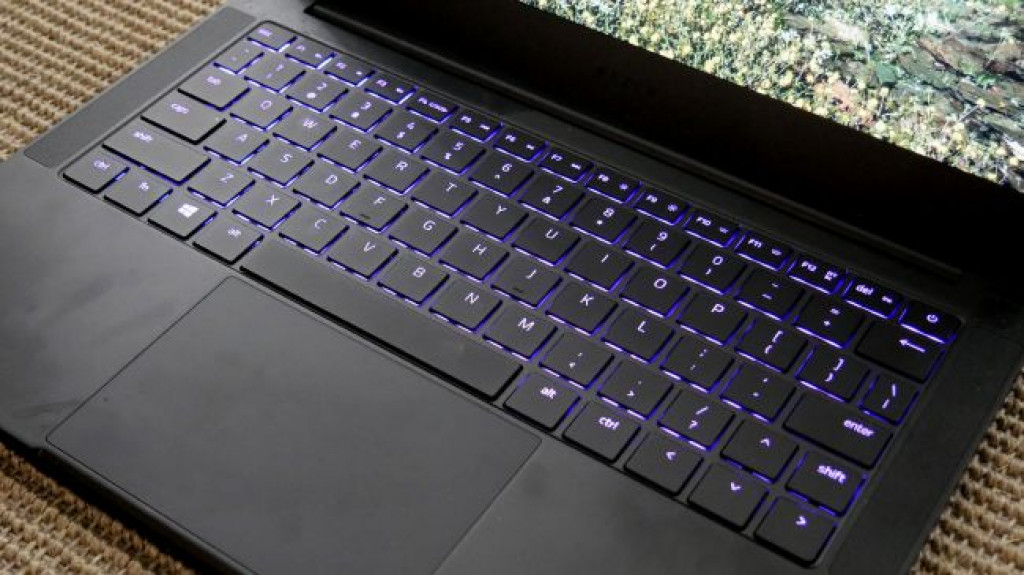
OUR VERDICT
Razer new 13-inch laptop is slim, slick and slightly good at playing less demanding PC games.
FOR
- Great design and build quality
- Strong all-round performance
- Lovely screen
AGAINST
- Expensive given the specifications
- Gaming performance is very much entry level
- Middling rather than massive battery life
It’s fair to say Apple has done a fine job popularising the 13-inch laptop form factor with its smallest MacBook Pro model, so It’s not a huge surprise to find Razer’s latest high-end 13-inch model aping Apple when it comes to some elements of the new Blade Stealth 13’s industrial design.
Price and availability
Razer’s latest 13 incher kicks off at $1,399 or £1,299 (around AU$2,400). For that you get the same quad-core eighth generation Intel processor that comes standard with every Stealth 13 model.
But you’ll make do with 8GB of RAM, a 1080p screen and Intel integrated graphics. Our review system is the middle option priced at $1,599 Stateside and £1,499 in the UK (around AU$2,700) . It’s the strongest value proposition in the Stealth 13 range thanks to upgrades to 16GB of RAM and an Nvidia GeForce MX150 GPU.
It’s the latter that turns the Stealth 13 into a somewhat gameable laptop. The top model doubles the SSD capacity to 512GB and upgrades the screen to 4K with touch control for $1,899 or £1,799 (around AU$3,250).
But don’t go thinking this is some kind of MacBook rip off. Razer has very much put its own high-quality ultrabook PC spin on the Blade Stealth 13.
Apart from the bad boy all-black styling, Razer has given the Stealth 13 some theoretical gaming props courtesy of Nvidia’s GeForce MX150 graphics chip in its more powerful 25 watt configuration and an 8th Gen Intel quad-core CPU, plus the promise of up to 11 hours of claimed battery life, all in a compact and ultraportable package.

Design
If Razer’s laptops ain’t exactly cheap, one of the main justifications for the premium pricing is high-end design. Think of the Stealth 13 as a badass, all-black, Windows-powered alternative to a 13-inch MacBook Pro and you’ll have a pretty good idea of what to expect.
With a CNC-machined aluminum unibody, it’s cut from very similar cloth to a MacBook. Indeed, in terms of overall size, it’s within a fraction of a millimetre off the MacBook Pro 13 for width and thickness and just a few millimetres larger in depth. Depending on specification, it weighs from 1.28kg to 1.38kg, and so right on the MacBook 13 money, too.

Arguably, Razer can’t quite match Apple for sheer build quality. But it comes awfully close. There’s a similar sense of dense, hewn-from-billet build, a very stable and satisfying keyboard (backlit with user-configurable RGB LEDs) and a general impression of bomb-proof impregnability. The Stealth certainly looks and feels expensive.
Razer has also furnished the Blade Stealth 13 with 4.9mm-thin bezels on each side of the display. There’s a bit more of a brow bezel and then a fairly substantial chin. But overall, it’s pretty compact for a 13-inch rig.

It’s also conspicuously restrained for a brand that’s very much associated with gaming. As slick as the Stealth is, it would also look plausible and thus not embarrassing in a work context.
For the record, the Stealth’s diminutive power supply very much lives up to the name. It’s small enough to add very little burden on the move.
Screen success
The 13-inch display of the Razer Blade Stealth 13 is particularly impressive. Highlights include punchy and vibrant colors, great viewing angles, decent pixel response and a nice matte anti-glare coating that avoids both reflectivity and annoying sparkle.
Factor in the aforementioned slim bezels and the overall impact is pretty awesome. As configured here, it’s a 1080p IPS panel limited to 60Hz refresh. That’s a good fit with the Stealth 13’s graphics subsystem if you’re particularly into gaming, as there’s little chance of driving higher refresh rates and resolutions.
On the other hand, Razer does offer an upgrade to 4K with touch input. For gaming, that’s not much of a benefit given there’s zero hope of gaming at 4K with the GeForce MX150 graphics. But you can opt to run the 4K panel at lower at lower resolutions with slightly compromised image quality and then enjoy the full 4K desktop experience with super-sharp fonts and the ability to view 4K video content the rest of the time, albeit at a fairly hefty price mark up.
The new Razer Blade Stealth 13 is every inch the contemporary ultra-portable powerhouse. That starts with the quad-core eighth-gen Intel Core i7-8565U CPU. It’s a beast of a processor for a laptop of this size.
Slightly less beefy, but arguably inevitable given the system’s proportions, is the Nvidia GeForce MX150 graphics. It’s essentially a mobile version of Nvidia’s lowest-end GT 1030 desktop graphics and packs 284 of Nvidia’s pixel-prettifying CUDA cores. For context, the likes of a GTX 1070, found in numerous serious gaming laptops, delivers 2,048 CUDA cores.
Elsewhere, our review units is specified with a 256GB NVMe SSD, 16GB of non-upgradeable RAM and a FullHD 1080p IPS display. Connectivity is an increasingly important aspect for modern laptops and here the Stealth scores well. You’ll find a USB Type-C socket on both sides of the chassis.
The right hand port is also Thunderbolt 3 compliant, which means four lanes of PCI Express connectivity and support for external graphics boxes for serious, if expensive, gaming action. As for the battery, it’s a 53.1Wh item and in this configuration is claimed to be good for up to 11 hours of mains-free operation.
Finally, the keyboard is a single-zone RGB backlit affair while the trackpad is generously proportioned, glass-topped and rear-hinged. From an input and tactility perspective, the Stealth certainly scores well.

But what about gaming? Is that Nvidia GPU really gaming-capable? Our benhmarks show it struggles with demanding games at high detail But it’ll play Fortnite pretty nicely at medium quality and full 1080p resolution.
OK, the graphics set to medium look rather flat. But it’s the gameplay experience is completely acceptable. Not a ringing endorsement for a $1,599 / £1,499 laptop with gaming pretensions, but then you know what you’re getting with any laptop that runs an Nvidia GeForce MX150.
It’s an entry-level gaming experience, to be sure. It’s also worth noting that the cooling fans get rather whiny during gameplay or any other heavy load. They occasionally kick in even when the system is idle, but can be particularly intrusive in-game.
As for the 13-inch display, it’s a honey. Punchy colors, great viewing angles and a nice matte anti-glare coating that avoids both reflectivity and annoying sparkle.
Battery life
In our battery life tests, the Stealth 13 performed pretty well in video playback, with our benchmark running a full 1080p video at 50% brightness until the battery runs out. With the Razer Blade Stealth 13, it lasted seven hours, which is a solid result.
However, the three hours and 31 minutes it delivered in PC Mark 8 was very disappointing, but doesn’t reflect real-world usage in our experience, which will be at least five hours and usually quite a bit more, depending on what sort of tasks you’re performing with the Razer Blade Stealth 13.

Final verdict
Make no mistake, this is one very appealing laptop. It looks great, feels expensive and performs well in many regards.
The main problem is the combination of price and remit. Razer isn’t pitching the Stealth 13 as an out-and-out gaming rig, but its mediocre performance in that regard is still a little disappointing if entirely predictable.
Meanwhile, at this price point a wide range of much higher performing gaming laptops are available. The caveat is that those laptops are all larger 15-inch systems.
All of which means the Stealth 13 is a darned desirable as a luxury Ultrabook. Think of it in those terms and the moderate gaming ability as an extra rather than a core feature and its an appealing if pricey overall package.
Source: techradar.com









































